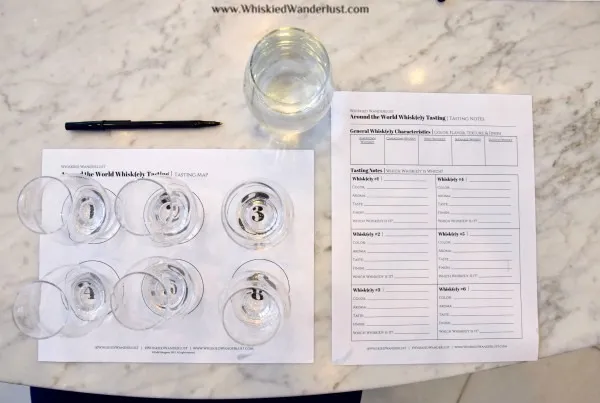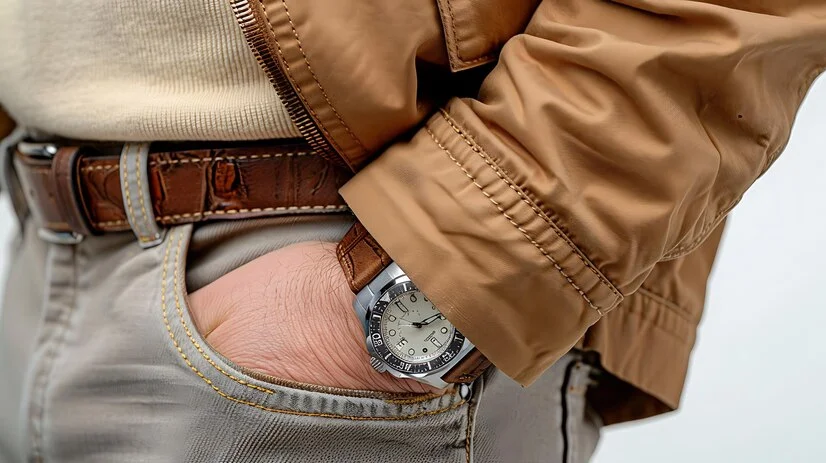Introduction
Whether you’re a seasoned whiskey enthusiast or just diving into the world of bourbon, a whiskey blind tasting sheet is your best friend for tasting without bias. Blind tastings are a fun, insightful way to explore new flavors—free from the influence of brand names or price tags. By focusing only on what you see, smell, and taste, you create honest and personal bourbon tasting notes. With the right whiskey tasting sheet, you’ll not only sharpen your palate but also discover hidden gems you might have otherwise overlooked. In this guide, we’ll walk you through everything you need—from how to use a tasting sheet to setting up your own blind tasting at home.
- Introduction
- What Is a Whiskey Blind Tasting Sheet?
- Core Elements of a Whiskey Blind Tasting Sheet
- How to Use a Blind Tasting Sheet
- How to Host a Blind Whiskey Tasting at Home
- Choosing the Right Whiskeys for a Tasting
- Understanding Whiskey Flavor Profiles
- Printable Templates & Resources
- Advanced Tips for Serious Tasters
- Common Mistakes to Avoid
- Conclusion
What Is a Whiskey Blind Tasting Sheet?
A whiskey blind tasting sheet is a simple tool used to jot down notes during a blind tasting—where you sample whiskeys without knowing their names. This removes bias and helps you focus only on the flavors, aroma, and overall experience. These sheets are often used in whiskey tasting events or casual get-togethers to track what you like and why. Whether you’re comparing a smooth bourbon or a bold rye, the blind tasting sheet guides your senses and makes your bourbon tasting more structured and fun.
Core Elements of a Whiskey Blind Tasting Sheet
A good whiskey blind tasting sheet helps you break down each pour into key tasting areas. Start with appearance—note the color and clarity. Next, explore the aroma (nose) by identifying scents like vanilla, oak, or spice. Then move to taste (palate)—what flavors do you notice? Sweet, smoky, bold? The finish follows—how long the taste lingers and what it leaves behind. Finally, give your overall impression. Rate it or add personal thoughts. These sections help organize your bourbon tasting notes and make each whiskey tasting sheet session more insightful, whether you’re new to tasting or a seasoned sipper.
ALSO READ: The Ultimate Guide to Reading Solo Leveling Manga Online
How to Use a Blind Tasting Sheet
Using a whiskey blind tasting sheet is simple and adds a lot of value to your bourbon tasting experience. Start by pouring a small sample into a glass—make sure the bottle label is hidden. Use the appearance section to write down the whiskey’s color, like amber or deep gold. Move to the nose and list any scents that stand out. Then take a sip and use the palate section to describe the taste—maybe it’s sweet, spicy, or smoky. Notice the finish—is it long, smooth, or warming? Finally, in the overall impression, score or summarize your thoughts. You don’t need to be an expert—just be honest and descriptive. A whiskey tasting sheet helps you remember what you liked (or didn’t) and encourages mindful sipping. Over time, you’ll notice your tasting skills and preferences sharpen naturally.
How to Host a Blind Whiskey Tasting at Home
Hosting blind whiskey tasting at home is easier than it sounds—and a lot of fun! Start by choosing 3 to 5 different whiskeys with varying styles or regions. Cover the bottles with bags or foil and label them with numbers or letters. Give each guest a whiskey tasting sheet to record notes on appearance, aroma, taste, and finish. Use identical glasses for fairness and offer water and light snacks between pours. Keep the setting quiet and scent-free to help focus on the flavors. At the end, reveal each whiskey and compare bourbon tasting notes. It’s a great way to learn, laugh, and maybe discover a new favorite.
Choosing the Right Whiskeys for a Tasting
When choosing whiskeys for a blind tasting, variety is key. Pick 3 to 5 bottles that offer contrast—like a smooth bourbon, a smoky Scotch, a spicy rye, or even an Irish whiskey. You can theme you’re tasting too, such as “Bourbons Under $50” or “Whiskeys from Around the World.” Avoid using only high-proof bottles, as they can overwhelm the palate. Aim for balance in flavor, region, and style. This makes the whiskey tasting more exciting and insightful. Whether you’re hosting for fun or trying to build better bourbon tasting notes, your whiskey lineup sets the tone for the entire experience.
Understanding Whiskey Flavor Profiles
Learning to describe whiskey flavor profiles makes your tastings more fun and meaningful. Common notes include vanilla, caramel, oak, smoke, spice, fruit, or even chocolate. Use your whiskey tasting sheet to jot down anything you notice—don’t overthink it! Over time, your bourbon tasting notes will become more detailed and personal. Try using a flavor wheel as a guide, especially if you’re new. Exploring different profiles helps you understand your own taste preferences—and makes every whiskey tasting a new adventure.
Printable Templates & Resources
To make your tasting easier, use a printable whiskey tasting sheet. These templates are designed to help you organize thoughts, stay consistent, and enjoy the process. A good whiskey blind tasting sheet includes space for appearance, aroma, taste, finish, and your final rating. You can find free or premium options online, including themed bourbon tasting notes templates. Choose between clean, simple designs or more detailed versions with flavor wheels and scoring systems. Print one for each guest or use a digital version on your phone or tablet. If you’re hosting regularly, consider creating a tasting journal to track your favorites over time. Having the right whiskey tasting sheet makes each session feel more intentional—and a whole lot more fun.
Advanced Tips for Serious Tasters
Ready to take your whiskey blind tasting to the next level? Start by using a consistent bourbon tasting sheet format so you can compare notes over time. Create a personal scoring system—maybe rank aroma, taste, finish, and balance out of 10. Keep a tasting journal to track trends in your preferences. For cleaner results, use unscented soap before tastings and taste in a quiet, distraction-free space. Palate cleansers like water or plain crackers help reset between pours. Hosting regularly? Rotate styles—bourbon one week, Scotch the next. The more mindful and consistent your process, the better your palate becomes. These advanced whiskey tasting tips will sharpen your senses and deepen your appreciation for each pour.
Common Mistakes to Avoid
Even seasoned sippers can slip up during a whiskey blind tasting. One common mistake is skipping the aroma stage—your nose picks up more than your taste buds! Take time to smell each pour before sipping. Another issue is comparing very different styles unfairly—like putting a bold peated Scotch next to a light Irish whiskey. Try to group similar types together for a smoother experience. Over-pouring is also a problem; small samples keep your palate sharp. Avoid tasting too many whiskeys at once—3 to 5 is a good range. Lastly, don’t rush your notes. Use your blind tasting sheet to slow down, think, and enjoy. The goal isn’t to pick a winner—it’s to explore, learn, and refine your bourbon tasting skills. By watching out for these small missteps, you’ll get much more out of every session—and have more fun doing it.
ALSO READ: kate middleton is reportedly holding a crucial meeting
Conclusion
A whiskey blind tasting sheet might seem like a small thing, but it opens the door to a richer, more personal whiskey tasting experience. Whether you’re sipping solo or hosting a group of friends, blind tasting helps you discover what you truly enjoy—without the influence of labels, prices, or hype. From the first swirl and sniff to the final sip and score, using a tasting sheet turns casual drinking into an intentional, thoughtful journey. It sharpens your senses, deepens your appreciation, and makes every chance pour to learn something new. Don’t worry about being an expert, just start tasting, writing, and having fun. Over time, your bourbon tasting notes will tell a story of your evolving palate. So, grab a few bottles, print out your favorite tasting sheets, and dive in. You might just find a new favorite whiskey hiding in plain sight.








